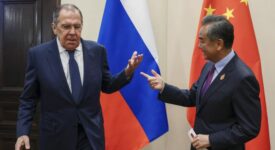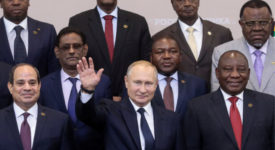The conflict in Crimea and its annexation by Russia unified the North Atlantic Treaty Organization (NATO), providing an impetus to the allies to beef up defenses. Yet, the process of boosting the alliance’s Eastern flank is not over yet. To finalize it, the Alliance needs to develop an all-encompassing long-term strategy toward Russia based on unity, deterrence, and resilience. The process is long overdue and poses many challenges.
NATO countries are divided in their perceptions and evaluations of the Russia threat – more specifically whether Russia would have the guts to invade any of the Baltic states – Estonia, Latvia, and Lithuania – thus directly facing the alliance’s Eastern flank. The Alliance has opted for modest rotating deployments to this region, with dubious deterrence value. Southern member states believe that NATO is not doing enough to boost security as opposed to what it is doing in the East. This weakens the NATO’s sense of solidarity and cohesion.
The Alliance also faces some logistical problems in moving its equipment across Europe to its Eastern flank. NATO has long admitted that it needs to boost its resilience at home to prevail in a conflict but it has yet to work on this issue in the area of cyber security. Whether it is transportation networks, energy grids or hospitals, infrastructure is a vulnerable piece of the puzzle.
The Alliance’s relations with the Kremlin are based on the 20-year old NATO-Russia Founding Act, which allows for some dialogue in the EU-Russia Council. Yet, the environment has changed completely, making the deal old-fashioned and unfitting with Germany being particularly reluctant to revamp it. There is also general silence in the NATO about other options. Moreover, the US dedication to funding and defending NATO’s Eastern flank is not as straightforward as it used to be in the past and therefore some member states remain concerned about future commitment of its partner across the Atlantic.
It is important to agree on a Russia strategy internally, which includes having an open and honest dialogue about the long-term strategy and differences between member state’s perceptions about Russia and the strategy on the hybrid and information war. The Alliance should also consider permanently basing troops in the Baltic states and Poland since the current arrangements are not very stable.
Ultimately, the NATO’s Eastern flank needs more reassurance. Another idea would be also to establish a “military Schengen” which would allow for troops, aircraft, trains and tanks and equipment to cross unhindered to the Eastern flank countries. A revision of the NATO-Russia Founding Act is also a necessary step in the right direction.
‘NATO’s Eastern Flank and Its Future Relationship With Russia’ – Policy Paper by Judy Dempsey – Carnegie Europe.







